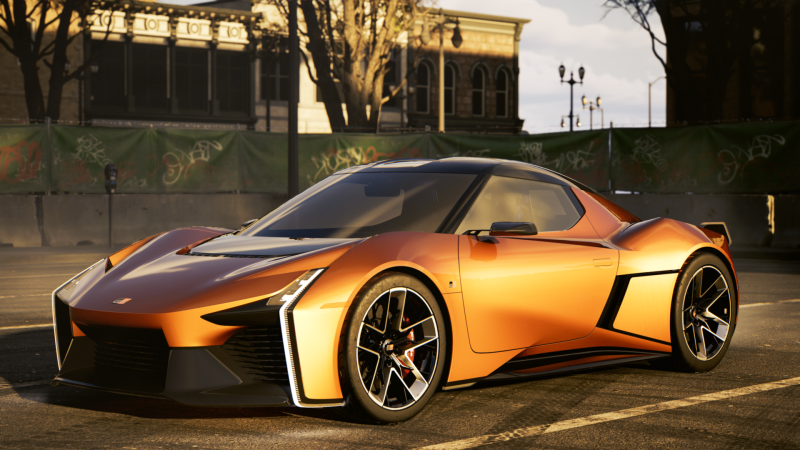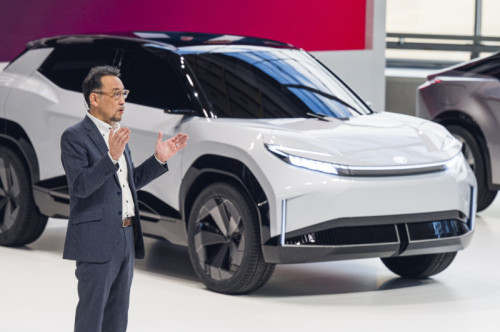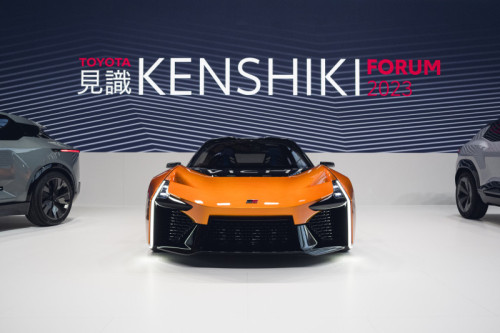
Toyota’s latest electrified products and technologies
London, 04 December 2023, (Oilandgaspress): – Yoshihiro Nakata, President & CEO, Toyota Motor Europe commenting on TME’s mid-term product launch plan stated that “whilst we will continue to offer multiple carbon reduction technologies, we will also steadily increase the number of zero-emissions vehicles we offer to customers”.
In Europe, Toyota’s electrified mix is already at 71% and is expected to grow to 75% in 2024, and this will further expand with new battery electric vehicles playing an increasingly significant role in its sales volumes.
By 2026, TME will offer around 15 different zero emission vehicles under the Toyota brand from passenger cars to light commercial vehicles, when Toyota’s European BEV mix is expected to be over 20% and more than 250,000 vehicles per annum.
Turning to hydrogen, Mr Nakata, explained that Toyota retains a confident outlook on its unique role in contributing to the decarbonisation of Europe’s mobility with the momentum of growing infrastructure and availability of green hydrogen.

Toyota’s hydrogen strategy reaches across several mobility sectors; in the passenger car segment, it offers the Mirai and newly launched Crown. In the commercial sector, TME’s Hydrogen Factory Europe, is integrating its current fuel cell technology into trucks, buses, coaches, boats – and pick up trucks as seen in the hydrogen fuel cell Hilux prototype presented at Kenshiki.
Hydrogen technology will be further advanced when Toyota launches its third generation fuel cell systems in 2026.
At Toyota Motor Europe’s (TME) 2023 Kenshiki event last week, a team of Global and European executives presented the company’s latest electrified products and technologies.
Kenshiki means insight in Japanese and this year’s edition to an audience of over 300 media, focused on the battery electric and hydrogen powered vehicles which will play a significant role in the company’s multi pathway strategy in the years ahead.
Mobility for All
Toyota’s principle of ‘Mobility for All’ and its commitment to achieving full carbon neutrality in Europe by 2040 and globally by 2050 guides the company’s approach to new product development.

Toyota’s principle of ‘Mobility for All’ and its commitment to achieving full carbon neutrality in Europe by 2040 and globally by 2050 guides the company’s approach to new product development.
Speaking at Kenshiki, Simon Humphries, Chief Branding Officer, Head of Design, Toyota Motor Corporation provided further insight into the company’s mindset: “for us, what mobility really comes down to, is freedom. With freedom comes opportunity, and at Toyota, we believe that everyone should have access to the opportunity that mobility provides, wherever in the world they live, whatever the situation and leaving no one behind.”
Toyota’s ‘multi pathway’ strategy confirms this thinking, where low and zero emission mobility solutions are designed to meet specific regional needs; products which satisfy customer demand or are relevant to their local infrastructure whilst remaining accessible so that no one is left behind on the journey to carbon neutrality.
Mr Humphries presented several concept models which will spearhead Lexus and Toyota’s next generation battery electric vehicles; he explained that the new modular design architecture combining gigacast chassis, components minimisation and the new Arene operating system, enables design freedom to elevate the entire user experience.
The exciting line-up of future Toyota and Lexus battery electric vehicles presented at Kenshiki are intended to appear on European roads in the coming years – including the Lexus LF-ZC, Toyota FT-Se Toyota FT-3e, Toyota Sport Crossover concept and the Toyota Urban SUV concept.
Information Source: Read full article
Energy ,Petrol , Electric Power , Natural Gas , Oil , Climate , Renewable , Wind , EV , LPG , Solar , Electric , Electric Vehicles, Hydrogen, Oil Price ,Crude Oil, Supply, Biomass , Sustainability,


